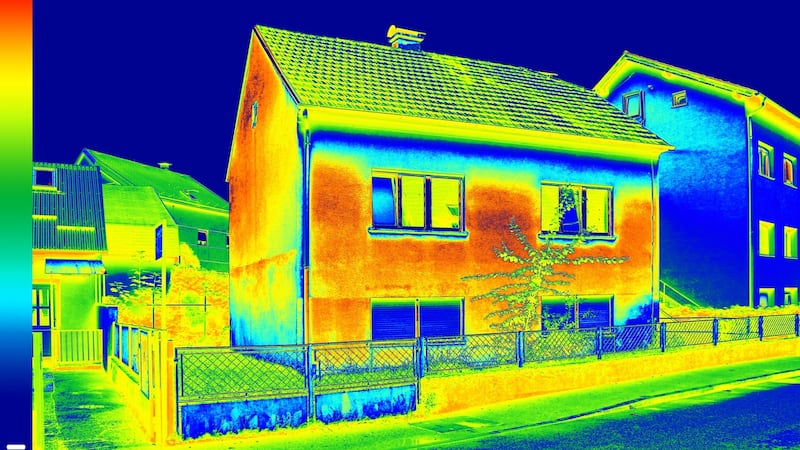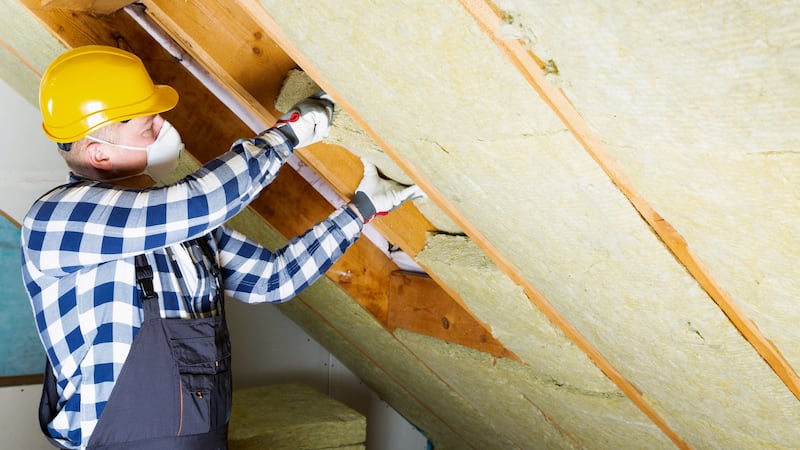When it comes to factors influencing health, we immediately think of things like exercise and diet. But we rarely think about how our health is affected by the quality of the air in our homes, offices, schools, gyms and cafes, says Prof Joseph G Allen, director of the healthy-building programme at Harvard University, in the United States.
“The majority of our exposure to outdoor air pollution occurs indoors and we spend most of our time indoors, yet there is a knowledge gap about the role of buildings in health,” Prof Allen said at a recent webinar run by the Institute of International and European Affairs and the Environmental Protection Agency.
Covid-19, however, has heightened public awareness of indoor air quality as stuffy crowded indoor spaces became superspreader events during the early stages of the pandemic, Allen says.
Knowledge about the transmission of infection through respiratory aerosols and droplets took some time to reach the public, and the widespread practice of keeping classroom windows and doors open to reduce the spread of the disease became a pertinent reminder of the indoor transmission of infectious diseases.
READ MORE
“We have known for a long time that increasing ventilation and enhancing the filtration systems of buildings reduces the transmission of influenza, tuberculosis, measles and even Sars-Cov-1 but it took some time for the experts to take on board that aerosol transmission of Covid-19 was also important,” he says.
Now, more than two years later, as workers return to offices in greater numbers alongside the twin concerns of influenza and Covid during the winter months, indoor air quality is back in focus.
Allen says people are routinely checking air quality with portable monitors in schools, coffee shops and offices. “Employers can’t hide any more. Now if you’re not measuring your building, employees are telling you what the quality of the air is and sharing it on social media,” he says. Inexpensive carbon dioxide monitors give reasonably accurate readings of indoor air quality and are used widely.
The problem is that the ventilation rates of buildings have been reduced in the past 100 years, particularly so in recent decades. The air tightness of some energy efficient buildings has been prioritised to the extent that it could be unhealthy for people to spend long periods inside if the ventilation systems aren’t adequately maintained.

Buildings need to be “tuned-up”, he says. While their original design standards for ventilation and filtration may have been good, the building doesn’t continue to perform at those levels over time. “It’s about taking the pulse of the building to check if it has slipped back.
“We need to optimise our buildings for human health, safety and comfort without ignoring how buildings contribute to climate change,” he says. While waiting for upgrades to ventilation and filtration systems, portable air cleaners should be used so the indoor air is changed four to six times an hour, he recommends.
Patrick Reilly, the technical officer of the Irish Green Building Council, says Part F of the building regulations focuses on insuring the right ventilation strategies and rates are in place to manage indoor air quality.
The biggest pollutants indoors in Irish homes continue to be from fossil fuels, Reilly says. “The biggest pollutants in the residential sector are from solid fuel cookers, natural gas cookers, stoves and open fires but volatile organic compounds are also big pollutants in commercial and residential buildings. These compounds are released slowly over time when heated air breaks down the resin in some building materials,” he says.
And while there are EU and World Health Organisation limits on outdoor air pollution, there are no regulations around indoor air pollution, he says.
“The ventilation and filtration systems are checked when buildings are completed but post-occupancy evaluation is the blind spot,” Reilly says. Ensuring ventilation and filtration systems in buildings are operating at their peak levels requires an extended aftercare framework.
The IGBC Home Performance Index (HPI) – version three was recently launched – includes requirements on post-occupancy evaluation of air quality. “It’s a voluntary not a mandatory standard which states that the best practice is for filters to be checked and replaced annually,” Reilly says. The HPI also stipulates a maintenance contract that includes training occupants on ventilation and filtration.
[ Underground farm in London explores new frontiers in growingOpens in new window ]
Some industry experts contend the widely used Leadership in Energy and Environmental Design (LEED) certification is good on materials, energy and water use in buildings but doesn’t go far enough on indoor air quality. The newer WELL building standard, however, places more emphasis on indoor air quality in its certification schemes.
“It is widely acknowledged within the industry that there is a need for post-occupancy evaluation of ventilation and filtration systems,” Reilly says. The 2021 EU Level (s) Framework is deemed to be the first step in rectifying this gap by setting out a standardised methodology on how to design and assess the sustainable performance of buildings throughout their life cycle.
Marie Coggins, senior lecturer in exposure science at the School of Natural Sciences at the University of Galway, is researching the indoor air quality of retrofitted homes in Ireland. One 2021 study on deep retrofitted homes found higher concentrations of pollutants in bedrooms compared with living areas.

“A lot of people were working from home and in their bedrooms at the time of our study. High concentrations of all indoor air pollutants were detected in bedrooms suggesting under ventilation. Considering that we spend up to nine hours per day in our bedrooms, we may need to look more closely about how we ventilate bedrooms – especially as some workers continue to work partly from home,” Coggins says.
The study found relatively high levels of some volatile organic compounds (VOC) such as formaldehyde in livingrooms and bedrooms with building materials, new paintwork and furnishing most likely to be the main source of these pollutants.
Homeowners need to understand the important role of ventilation in providing good indoor air quality, she says. “Keep your homes well ventilated, particularly wetrooms and kitchens when in use. Much of the higher exposure of pollutants indoors are associated with cooking and cleaning. It’s very important when a mechanical ventilation system is provided with a retrofit that people understand when it isn’t performing correctly – for example if it has a build-up of dust on the grilles.”
Recent research has found concentrations of VOCs can continue to be emitted from new furnishing for years with higher levels emitted when indoor temperatures are higher. And as homes become more airtight following retrofitting energy efficiency measures, Coggins says adequate ventilation and filtration will become even more important.
“In the past, in older less energy efficient buildings, poor indoor air quality was due to excess moisture leading to condensation, mould growth and also due to the use of fossil fuel for heating and cooking. But as homes become more efficient and airtight, if we don’t provide adequate ventilation, the danger is such pollutants become replaced with volatile organic compounds from building materials, chemical cleaning products or fine particulates from cooking, burning incense or candles,” she says.
Coggins adds: “We have to ask whether we should be looking at implementing warning labels on common construction products and materials such as windows/doors, floor coverings to help identify and promote the use of low VOC emitting products similar to the compulsory VOC labelling system in France.”



















